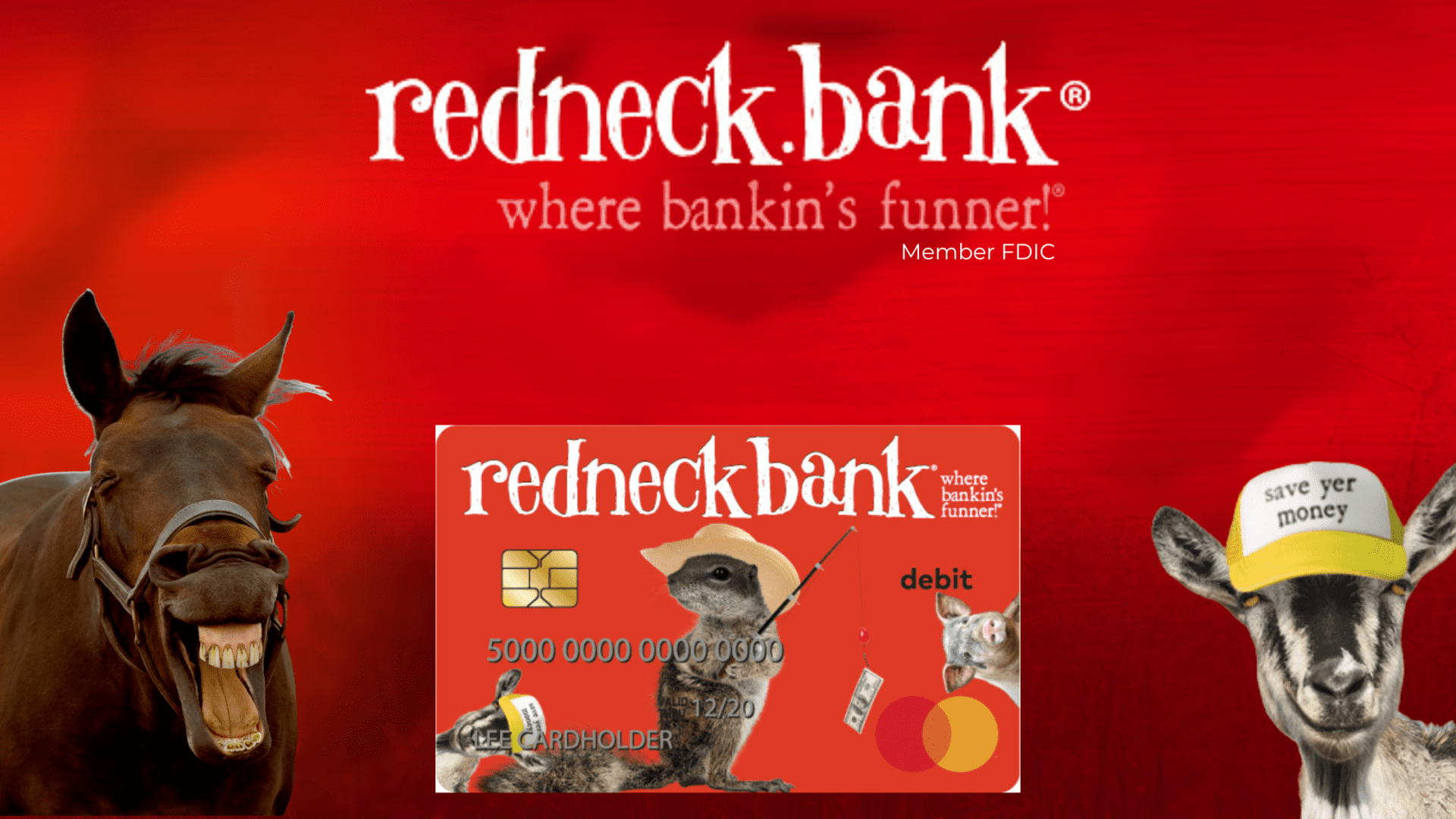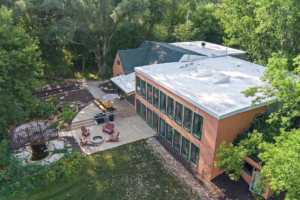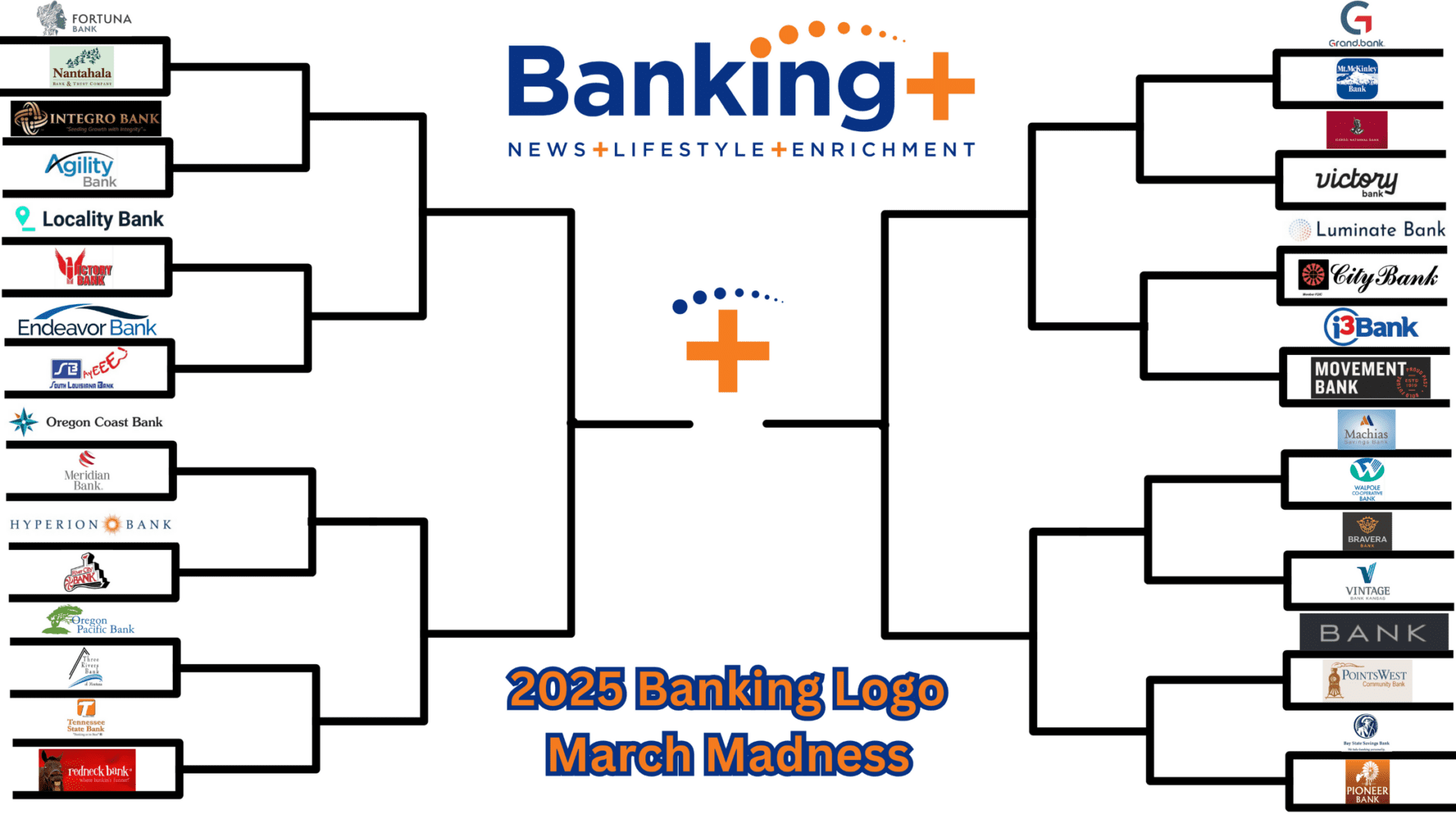In the early 2000s, as online banking began to reshape the industry, Wade Huckabay—a third-generation banker and President of All America Bank in Mustang, OK—noticed an alarming trend: National banks were siphoning deposits from local communities. “We were borrowing more and more money just to loan out,” Huckabay explains.
Determined to keep his community bank, not only competitive but dominant, he proposed a series of “online” banks.
A Unique Approach to Online Banking
At that time, All America Bank comprised three separate community banks in several small Oklahoma towns. Its leadership team decided to forego the traditional rural imagery that permeated much of their competitors’ marketing collateral: cattle, wheat, and wide-open plains.
Instead, they constructed three distinct digital identities:
- AmericaNetBank (All America Bank, Mustang, OK), which presented a patriotic theme to draw in Americans nationwide.
- Evantage Bank (Southwest State Bank, Sentinel, OK), is positioned as a tech-inspired brand to appeal to digitally savvy users.
- Redneck Bank (Bank of the Wichitas, Snyder, OK), a wholly offbeat, humorous, down-to-earth brand. This bank was owned 100 percent by the Huckabay family members, whereas the other two banks had some shareholders.
“We knew Redneck Bank was going to be a risk that we did not want to expose shareholders to, but [the family] for the most part, loved the idea,” he says.
Each bank used a “doing business as” (DBA) name approved by regulators, creating an alter ego for its online divisions. Redneck Bank, decidedly unstuffy and refreshingly wry, quickly stood out among more conventional counterparts, and its fun, fresh take on banking proved highly successful.
As Huckabay assesses, “You can be whoever you want on the Internet.”
What is Redneck Bank?
A Fun and Interactive Banking Experience
After a long brainstorming session, Huckabay struck upon an unconventional name: Redneck Bank. When he presented it to his team, the response was mixed. “The two oldest people in the room, including my dad, loved it. But the younger ones said it would never work,” Huckabay recalls.
Yet, they pushed forward, creating a website full of humor, departing from traditional banking sites and their visuals of “…marble columns and green-gray color schemes.”
Instead, the Redneck Bank landing page features an interactive horse, pig, squirrel and fly, with humorous sound effects. The bug all but begs for interaction, challenging visitors to “chase” it virtually by swooping a mouse in pursuit. “Our idea was that everyone else’s websites are so boring. We wanted to do something that ran right up against the grain of everything,” Huckabay notes.
The Viral Challenges and Success of Redneck Bank
When Redneck Bank went live, the reaction exceeded all expectations. “We went from one or two account openings a month to 5,000 hits in December,” Huckabay cites. By March, the organization’s website was getting 1.2 million hits per month. “We were opening 350 accounts a day, and opened accounts in all 50 states within months,” he says.
The success brought new challenges, as well. “Our call center was overwhelmed. People were waiting on hold for 40 minutes and were mad when they finally got through,” Huckabay says. Even AT&T called, concerned by the spike in calls. “They thought we were running an escort service!” Huckabay laughs.
But the public response affirmed their unique strategy. “People loved the redneck branding, and they wanted that [debit] card to show their friends,” Huckabay says. Soon, they had a massive following from California, Texas, and New York. Today, Redneck Bank’s deposits account for roughly half of the bank’s total base.
Redneck banking website data
The Man Behind the Outhouse Door
The Huckabay Family’s Banking Story
To understand where this unconventional bank brand comes from, it’s important to know Huckabay himself, a man who is the sum of the generations that preceded him. His is a tale of a family with deep roots in American banking, spanning nearly a century.
Huckabay’s grandfather, T.C. Huckabay, set the foundation in the 1920s, and Huckabay has carried on the legacy in his own way, merging family values with a bold modern approach. From surviving the Dust Bowl to navigating the digital age, Huckabay’s journey reflects both resilience and adaptability.
The Making of a Banker: Battling the Dust Bowl
Huckabay shares the hard-won legacy his grandfather built in the small town of Mountain Park, OK. “I asked my granddad one time, ‘Why did you become a banker?’ He said he looked around his town and thought the people who had it best were the bankers,” Huckabay remembers.
After attending a trade school, T.C. moved to Oklahoma, took on multiple roles as teller, janitor, and bookkeeper, and eventually became president of Planters State Bank. The Great Depression, however, nearly brought everything to a halt.
As Huckabay recounts, “Life during the depression was horrible. The bank president committed suicide at his desk. The suicide note even had blood on it. My sister has that note in our family’s safety deposit box.”
Determined to continue, T.C. rallied the community to raise capital, even driving to the state banking department to reopen the bank himself. “It was the Dust Bowl, the hardest time of his life. They’d hang wet blankets over windows to keep the dirt out,” Huckabay describes, capturing the unrelenting hardship of the time.
The Huckabays Unite to Weather the Storm
Years later, T.C.’s son and eventually Huckabay himself would continue the legacy. Growing up, Huckabay never imagined he’d follow in his father’s and grandfather’s footsteps. “I wasn’t sure what I wanted to be, but I didn’t want to work for my dad,” he laughs, remembering his dad’s strict work ethic. “There was no sleeping in on weekends—always yard work or projects.” Yet, after college in the 1980s during Oklahoma’s oil bust, opportunities were scarce. “There weren’t jobs. The unemployment rate was 10–15 percent, so my brother and I both ended up working for the bank,” Huckabay says.
Redefining Local Banking: Lessons from a Family-Run Bank
Despite its rapid growth, Redneck Bank remains a family affair, with Huckabay, his brother, and his sister handling different roles. “We have about $530 million in total deposits now,” Huckabay notes. “It’s doubled the amount of money we can loan to our community.” He acknowledges that striking a balance between growth and stability is key, especially in a family business. “We fought a lot as kids, but now we’re good friends.”
For Huckabay, the journey of running a bank is as much about innovation as it is about tradition. Reflecting on his past, he says, “It’s amazing to see where we’ve come from and what we’re doing today. But at the end of the day, it’s about hard work and adaptability.”
With Redneck Bank, Huckabay has created not just a bank, but a community-centric brand that redefines what it means to bank local in a digital world.
Watch the full interview with Wade Huckabay:
Banking+ interview with Wade Huckabay, President of All American Bank, OK





















